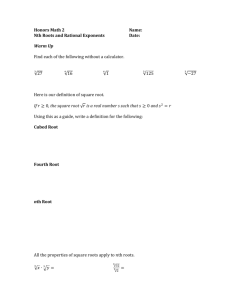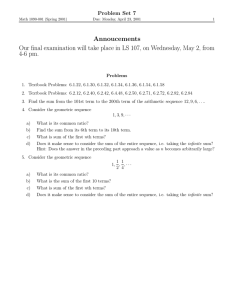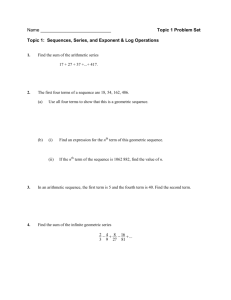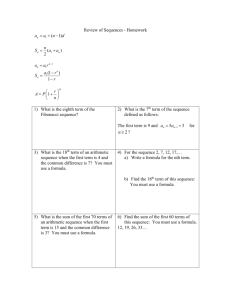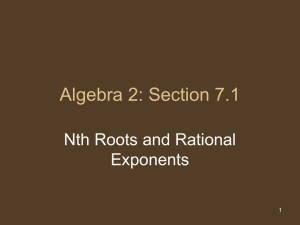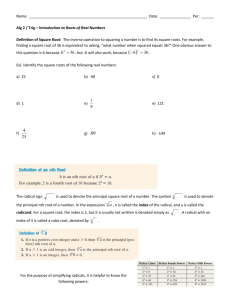8.4 Notes (Completed) - Fort Thomas Independent Schools
advertisement
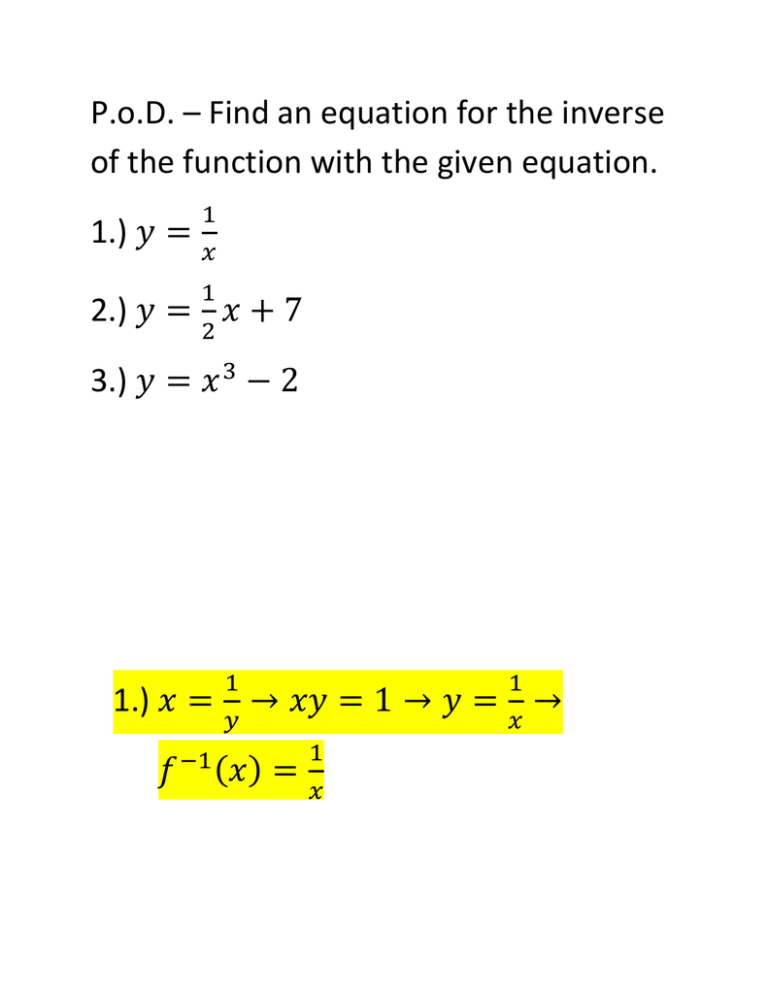
P.o.D. – Find an equation for the inverse of the function with the given equation. 1.) 𝑦 = 1 𝑥 1 2.) 𝑦 = 𝑥 + 7 2 3.) 𝑦 = 𝑥 3 − 2 1.) 𝑥 = 𝑓 1 𝑦 −1 ( 1 → 𝑥𝑦 = 1 → 𝑦 = → 𝑥) = 𝑥 1 𝑥 1 2.) 𝑥 = 𝑦 + 7 → 2𝑥 = 𝑦 + 14 → 2 2𝑥 − 14 = 𝑦 → 𝑓 −1 (𝑥 ) = 2𝑥 − 14 3.) 𝑥 = 𝑦 3 − 2 → 𝑥 + 2 = 𝑦 3 → 3 √𝑥 + 2 = 𝑦 → 𝑓 −1 (𝑥 ) = 3 √𝑥 + 2 𝑜𝑟 (𝑥 + 2) 1 3 8-4: Radical Notation for nth Roots Learning Target: I will be able to evaluate radicals and solve real-world problems that can be modeled by equations with radicals. Recall: a square root symbol, √ , is also known as a radical sign. 𝑛 Definition of √𝑥 : When x is nonnegative and n is an 1 𝑛 𝑛 integer ≥ 2, then √𝑥 = 𝑥 . Examples: 2 √𝑥 = √𝑥 = 3 1 𝑥3 5 1 𝑥5 √𝑥 = √𝑥 = 7 √𝑥 5 = 10 √𝑥 4 = 4 𝑥 10 = 1 𝑥2 5 𝑥7 2 𝑥5 5 = √𝑥 2 The Geometric Mean: Multiply all the numbers in a set and take the nth root of the product. EX: In a water quality survey, 8 samples give the following levels of E-coli bacteria. Sample 1 Count 1 (per 100 mL) 2 57 3 173 4 40 5 577 6 7 1159 301 8 94 Use the geometric mean to compute the average level of bacteria. 8 √1 ∙ 57 ∙ 173 ∙ 40 ∙ 577 ∙ 1159 ∙ 301 ∙ 94 8 = √7463362712502480 = 96.4088 EX: The following chart shows the population for eight 1-square-mile regions in the United States. Sample Population 1 47 2 68 3 159 4 2215 5 8715 6 10512 7 12130 8 45312 Use the geometric mean to compute an average population density. 8 √47 ∙ 68 ∙ 159 ∙ 2215 ∙ 8715 ∙ 10512 ∙ 12130 ∙ 45312 8 = √56676679928852478824448000 = 1656 4 EX: Use a calculator to evaluate √2401. There are two methods for doing this. Root of a Power Theorem: 𝑛 √𝑥 𝑚 = 𝑚 𝑥𝑛 EX: Rewrite √√√√10 using rational exponents. (show work on the whiteboard) 1 1016 Upon completion of this lesson, you should be able to: 1. Compute a geometric mean. 2. Evaluate nth roots. 3. Apply the Root of a Power Theorem (make roots into fractional exponents). For more information, visit http://hotmath.com/help/gt/genericalg2/section_7_6.ht ml HW Pg.541 1-18, 21-29 Quiz 8.1-8.4 tomorrow
